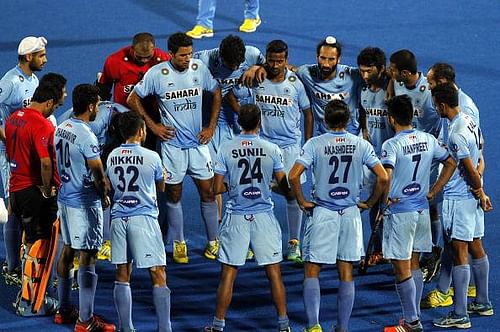
What went wrong for Indian hockey

Hockey – A sport of pride in the past century. A sport of shame in this 21st century. But, did anyone ever expect such would be the fate of the nation which won 8 Olympic Gold medals along with 1 silver and 2 bronze medals. This stat speaks a lot of the superiority that we Indians had in field Hockey. But what changed? What went wrong? Why we fell so deep that we didn’t even qualify for the 2008 Summer Olympics and finished last in the 2012 Summer Olympics.
Many would argue that the current state of Indian Hockey is of their own making. But, I would like to talk about certain external factors which lead to the downfall of the quality of the Indian game.
The first was the introduction of artificial grass as the playing surface to make the game faster and more thrilling for the viewers. With the introduction of astroturf, the ball moved 5 times faster than it used to on natural grass. Although the rest of the world adapted well to this change, the Indians, who once dominated the game and were known for their immense dribbling skills and short passes, could not evolve with the times.
Although the national team practiced on artificial surface regularly, the youngsters learning the trade, did not have artificial turf to practice on. This lack of investment in grassroots hockey has been the major reason for India gradually falling behind to other nations. In India, there is one artificial turf for every 2,00,000 professional hockey players. In contrast, in Netherlands and Germany, 260 players share a ground.
Another change – the abolition of the Offside rule from field hockey – added to the woes of Indian hockey. The offside rule prevented the players from standing behind the opponent’s defence line before the pass is played. However, with offside rule giving way, hockey saw the introduction of a lot of long passes as strikers were allowed to stay high up in the pitch.
The strategic advantage enjoyed by the Indian team prior to the rule change took a major hit as tactics which were more direct reaped more success and India’s reluctance to move away from slow, attacking build-up resulted in their downfall. India, who heavily relied on short passes and believed in a possession-based game, were stunned with the rise of the counter-attacking play.
Not all doom and gloom for Indian hockey

Despite India’s last medal at the Olympics coming way back in 1980, India are still the most decorated side at the Olympics and by far. India have now fallen to a World ranking of 9 and failed to qualify for the 2008 Olympics, while finishing last in the 2012 Olympics.
However, it is not all doom and gloom in the former national sport of the country (India has no national sport currently). Under the tutelage of new coach Paul van Ass, who stresses on playing the Dutch way – fast counter-attacking game, India is catching up to the Europeans and Australia.
Captained by one of the best hockey players in the world currently, Sardar Singh, India won the 2014 Asian Games, becoming the first side to book a place in the Rio Olympics in 2016. This was India’s first Asian Games win in 16 years.
Having already qualified for the Olympics, in the upcoming Hockey World League (HWL) semis, India can relax and concentrate more on integrating Van Ass’s new strategies in their game rather than worrying about the results.
With the self-touch being introduced in free hits and the change in penalty shoot-out, the world of hockey is constantly changing. India needs to make sure they adapt to the new rules that are introduced in hockey and not commit the same mistakes again.
Recent developments such as the initiative taken by Star Sports and Indian Hockey Federation to come up with the Hockey India League (HIL) and improvement at grass root level will be pivotal in restoring India’s place as the dominant hockey nation. However, it should be a gradual process and the fans will have to be patient if Indian Hockey is to once again reach the heights it was accustomed to in its glory years.